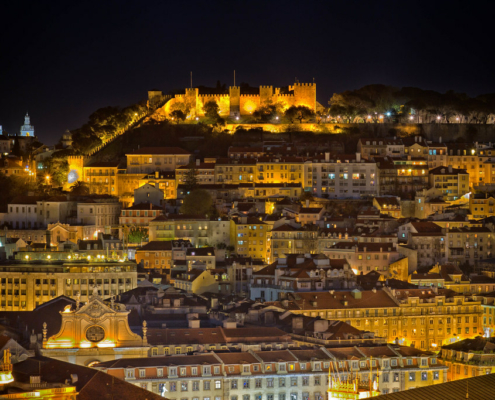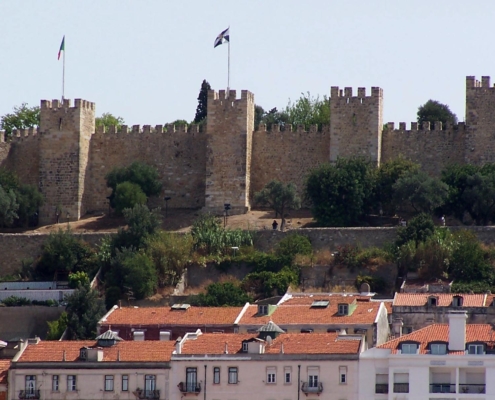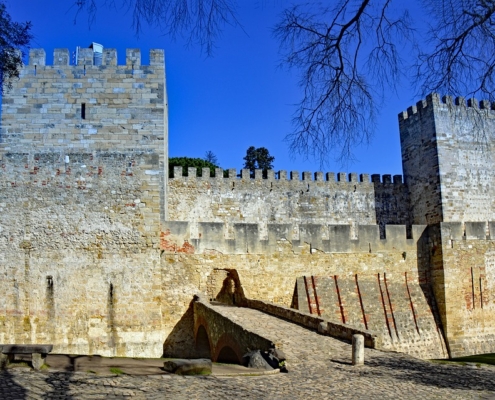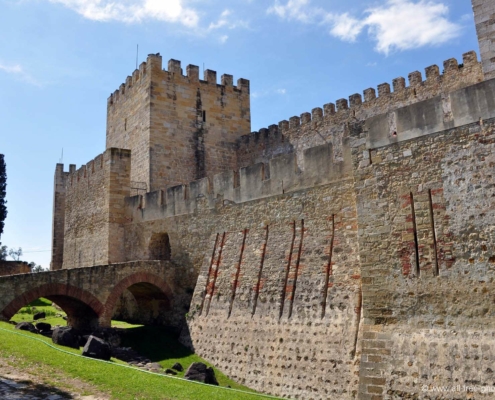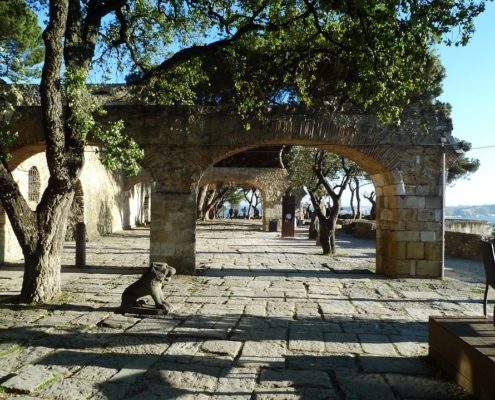São Jorge Castle
Custódio Vieira da Silva, Filippo Terzi, João Gillot, Manuel do Couto, Teodósio de Frias, the Younger | 1938 | Visitor Information
"
The castle is in the centre of Lisbon, on a hill, while many of its walls extend around the citadel into the civil parishes that surround it to the east and south. The castle's plan is roughly square, and it was originally encircled by a wall, to form a citadel. The castle complex consists of the castle itself, some ancillary buildings, gardens, and a large terraced square from which an impressive panorama of Lisbon is visible. The main entrance to the citadel is a 19th-century gate surmounted by the coat-of-arms of Portugal, the name of Queen Maria II, and the date 1846. This gate permits access to the main square, which is decorated with old cannons and a bronze statue of Afonso Henriques, the Portuguese monarch who took the castle from the Moors. This statue is a copy of the 19th-century original, by the romantic sculptor António Soares dos Reis, which is located near Guimarães Castle in northern Portugal. The remnants of the royal palace are located near the main square, but all that is left are some walls and a few rebuilt rooms such as the Casa Ogival. It now hosts the Olissipónia, a multimedia show about the history of Lisbon. The medieval castle is located toward the northwest corner of the citadel, at its highest point. Hypothetically, during a siege, if attackers managed to enter the citadel, the castle was the last stronghold, the last place in which to take refuge. It is rectangular, with ten towers. A wall with a tower and a connecting door divides the castle courtyard into halves. A series of stairways allow visitors to reach the walkway atop the wall and the towers, from which magnificent views of Lisbon can be enjoyed. The Tower of Ulysses had in 1998 a camera obscura installed that allows spectators a 360-degree view of the city and Tagus River. Apart from its main walls, the castle is protected, on its southern and eastern sides, by a barbican, a low wall that prevented siege engines from approaching the main castle walls. The northern and western sides of the castle, on the other hand, were naturally protected by the steep hillside sloping downward from the castle's foundations. The castle is also partially encircled by a moat, now dry. The main entrance is fronted by a stone bridge across the moat. On the west side, there is a long curtain wall extending downhill, ending at a tower. This tower served to control the valley below, and it could also be used to escape, in case the castle was taken by enemies.
"
Information provided in part by: Wikipedia

